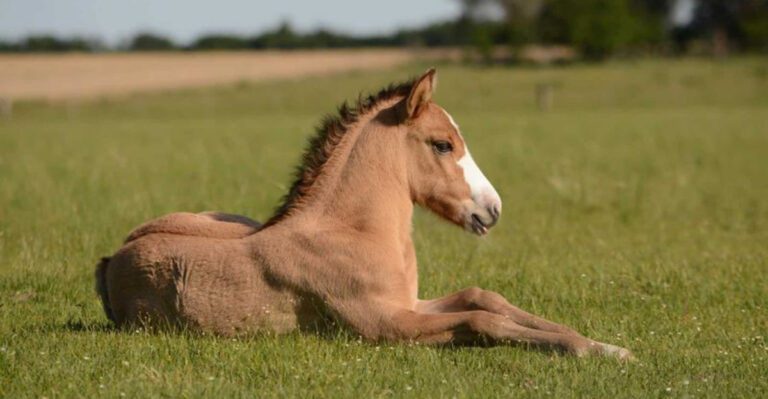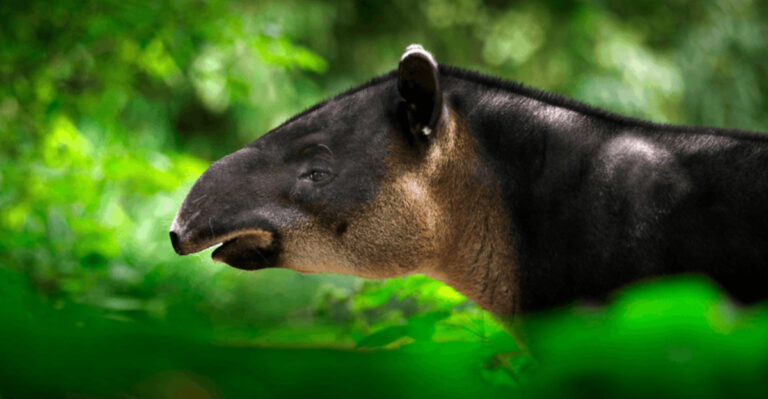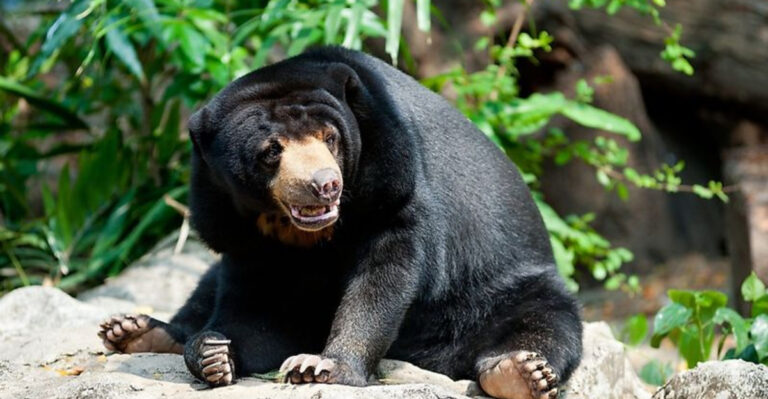10 Top US States To See Bald Eagles In The Wild (And 5 States Where They’re Hard To Spot)
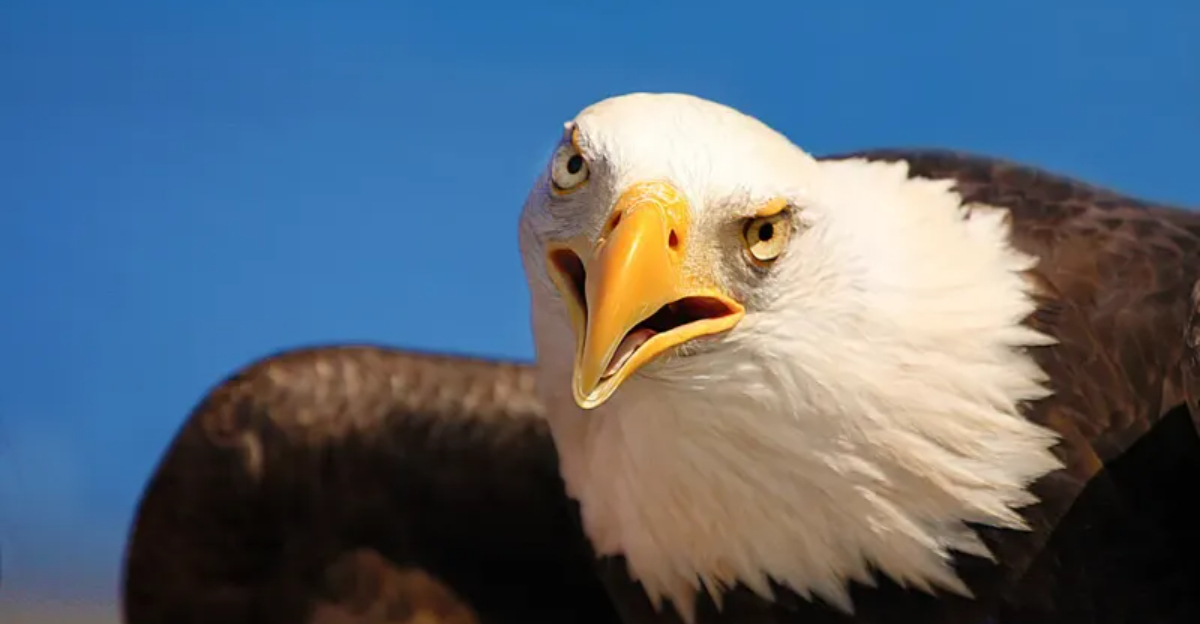
Bald eagles, America’s national bird, inspire awe with their majestic appearance and impressive wingspan. These magnificent creatures can be found throughout much of the United States, but some states offer significantly better viewing opportunities than others.
Whether you’re a dedicated bird watcher or simply hope to glimpse these iconic raptors in their natural habitat, knowing where to look can make all the difference.
1. Alaska
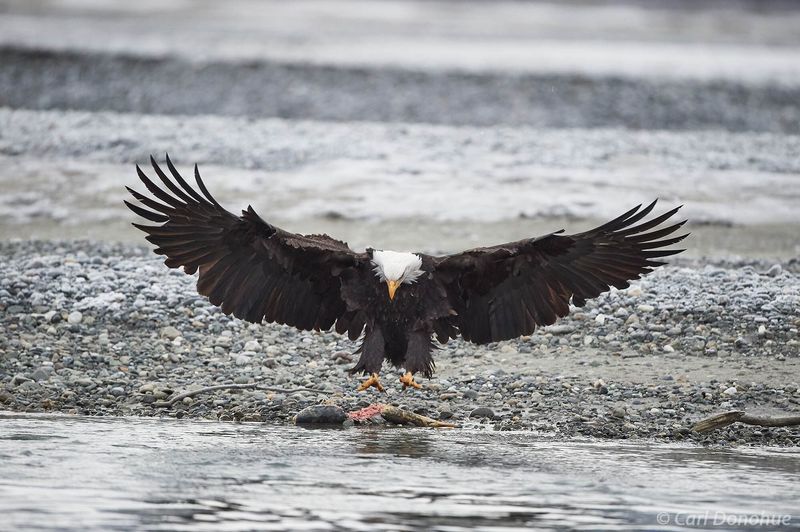
Alaska reigns supreme for eagle enthusiasts with over 30,000 bald eagles—roughly half the nation’s population! The Chilkat River hosts the world’s largest gathering during salmon runs, where hundreds gather in a single view.
Coastal areas provide year-round habitat thanks to abundant fish and minimal human disturbance. The Aleutian Islands and Southeast Alaska offer particularly spectacular viewing opportunities.
2. Minnesota
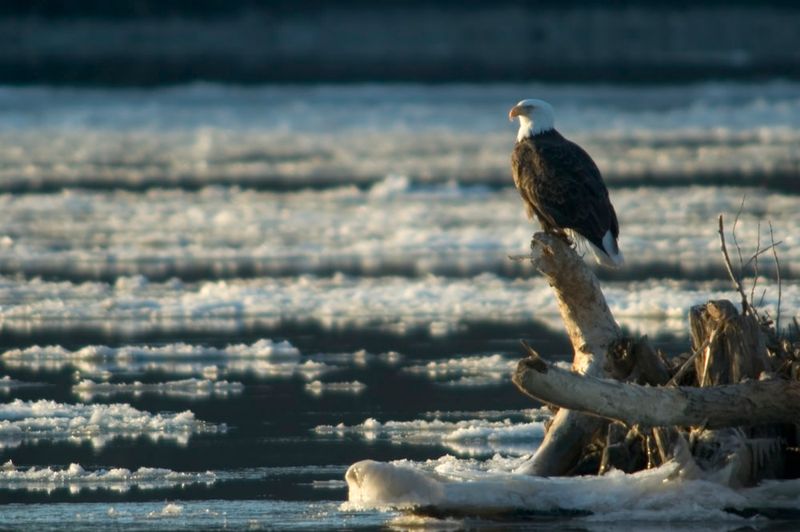
Minnesota’s interconnected waterways create perfect eagle hunting grounds. The Mississippi Headwaters area boasts one of the densest breeding populations in the lower 48 states.
Winter brings spectacular gatherings near open water at places like Wabasha’s National Eagle Center. The state’s commitment to wetland preservation has helped eagle numbers soar in recent decades, making sightings increasingly common.
3. Florida
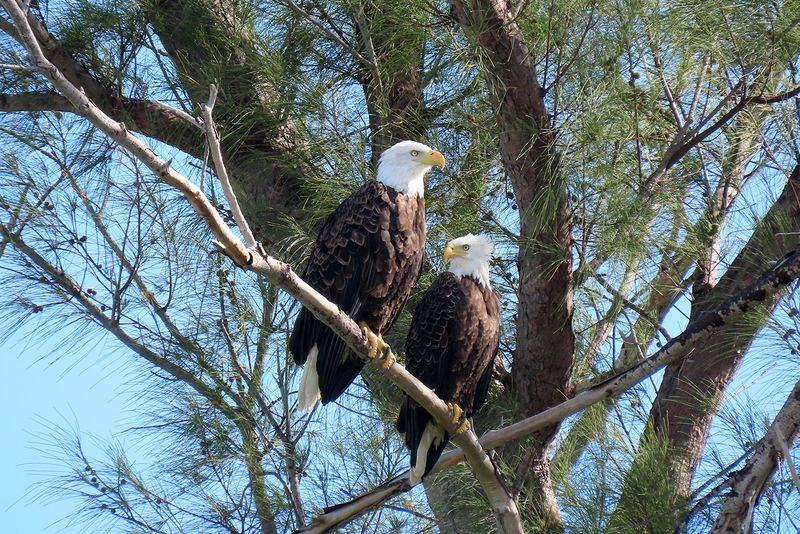
Florida’s warm climate attracts northern eagles escaping harsh winters. Merritt Island National Wildlife Refuge and St. Marks National Wildlife Refuge host impressive seasonal populations.
The state’s abundant fish-filled waterways provide ideal hunting grounds. Eagles here often nest earlier than their northern counterparts, with nesting activity beginning as early as October and continuing through April.
4. Michigan
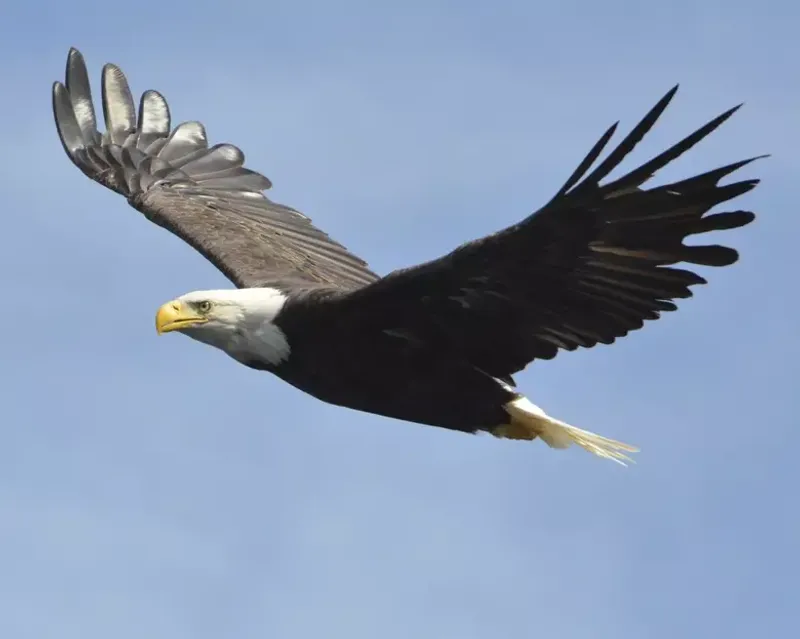
Michigan’s Upper Peninsula shines as a premier eagle-watching destination. The pristine shorelines of Lakes Superior, Michigan, and Huron provide abundant fishing opportunities for these skilled hunters.
Pictured Rocks National Lakeshore offers breathtaking views of eagles soaring against limestone cliffs. Winter concentrations occur along the Au Sable River, where open water attracts eagles when inland lakes freeze.
5. Washington
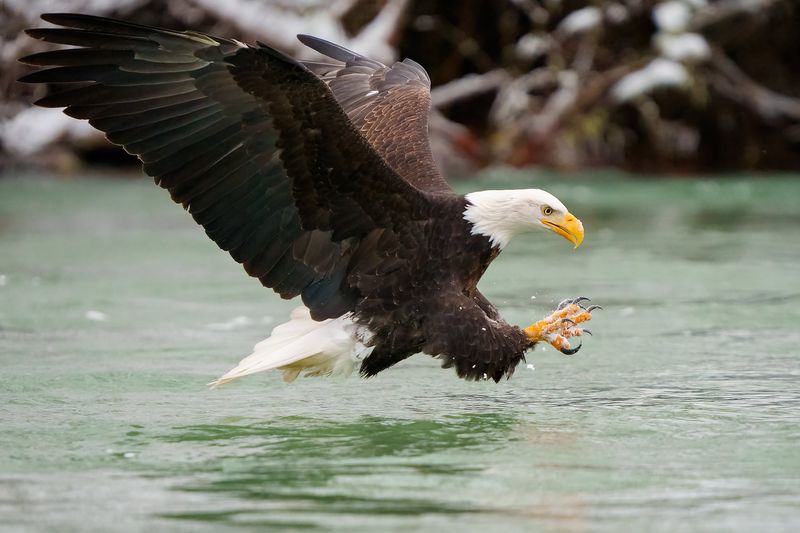
Washington’s Skagit River Valley transforms into an eagle spectacle during winter salmon runs. Hundreds gather to feast, creating one of the largest concentrations outside Alaska.
The Olympic Peninsula offers year-round sightings with its pristine coastline. Puget Sound’s protected waters and abundant marine life support a thriving resident population, with eagles often spotted perched on tall Douglas firs.
6. California
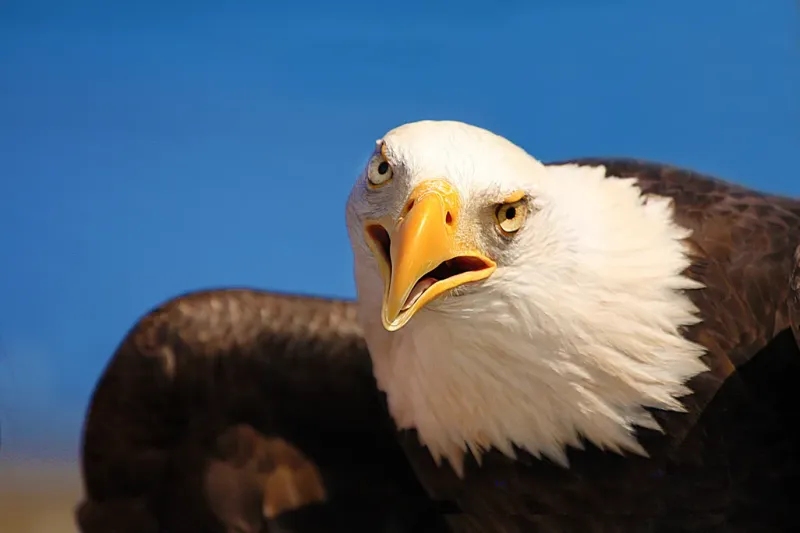
California’s diverse landscapes support growing eagle populations. Lake Shasta hosts impressive winter gatherings, while the Klamath Basin becomes a hotspot during migration seasons.
Catalina Island features a unique opportunity to see eagles that have been successfully reintroduced after DDT nearly eliminated them. The Sierra Nevada range provides ideal nesting sites, with pairs returning to the same massive nests year after year.
7. Oregon
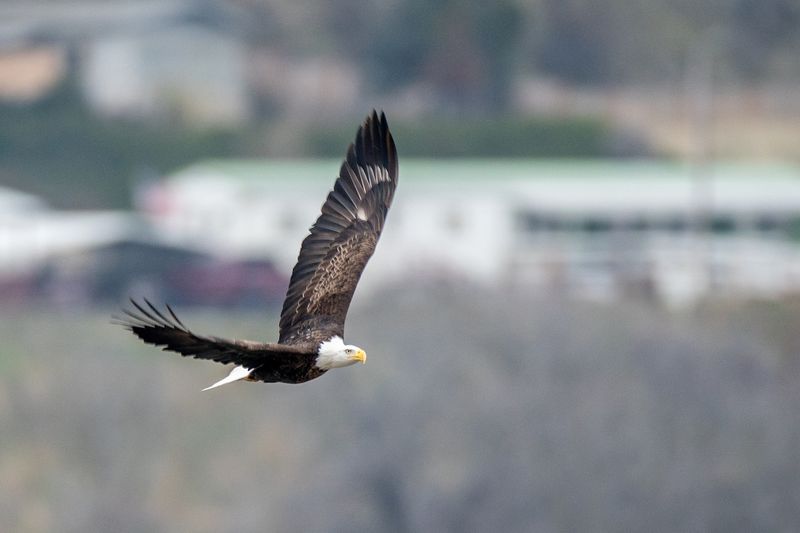
Oregon’s Columbia River Gorge offers spectacular eagle viewing against dramatic basalt cliffs. The Willamette Valley hosts winter congregations that follow salmon runs upstream.
Eastern Oregon’s Wallowa Lake becomes an eagle hotspot during kokanee salmon spawning season. The state’s diverse habitats, from coastal headlands to high desert plateaus, support both year-round residents and seasonal visitors.
8. Idaho
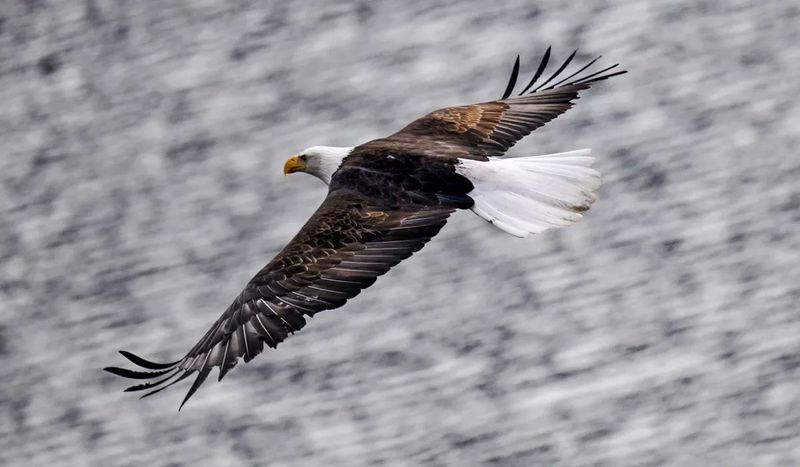
Idaho’s Snake River Plain provides prime eagle real estate with its combination of tall trees for nesting and fish-filled waters below. Winter brings concentrations around Lake Coeur d’Alene, where eagles feast on spawning kokanee salmon.
The Frank Church-River of No Return Wilderness offers remote viewing opportunities in pristine settings. Idaho’s relatively undeveloped landscape provides the isolation these sometimes-shy birds prefer.
9. Montana
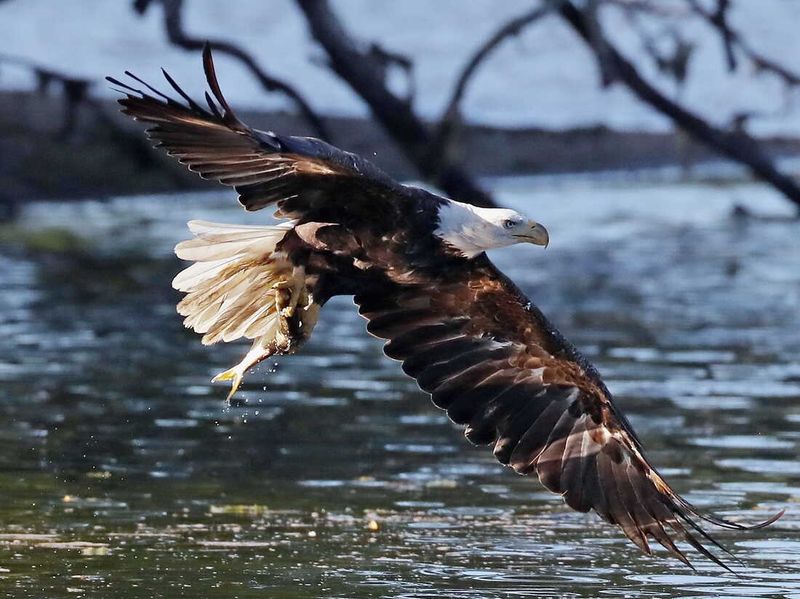
Montana’s glacier-fed lakes and mighty rivers create perfect eagle habitat. Glacier National Park offers sightings against some of America’s most spectacular mountain scenery.
The Missouri River corridor hosts impressive winter gatherings when eagles follow waterfowl migrations. Flathead Lake, with its crystal-clear waters and abundant fish, supports a healthy year-round population that’s easily observable from scenic overlooks.
10. Wyoming
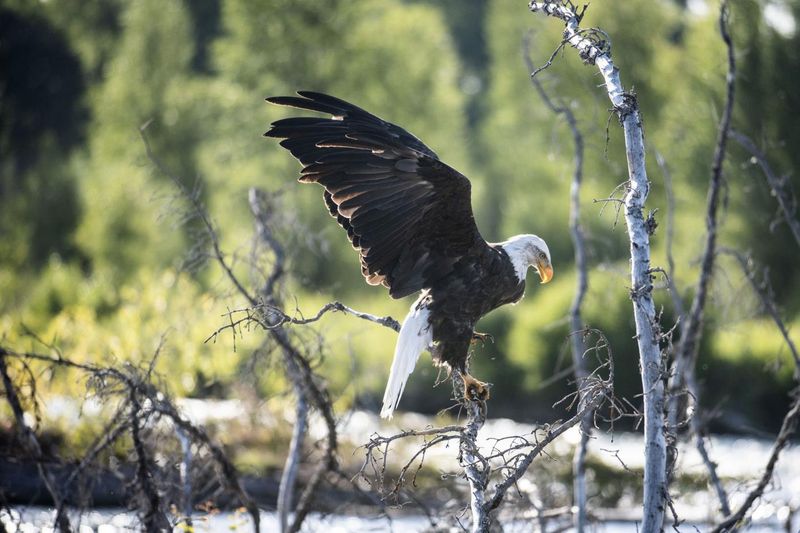
Wyoming’s Yellowstone and Grand Teton National Parks offer unparalleled eagle viewing opportunities. The Snake River corridor provides ideal habitat with its combination of fish-filled waters and tall cottonwoods for nesting.
Winter brings concentrations around geothermal features that keep waters ice-free. Wyoming’s vast protected lands ensure eagles have the undisturbed territory they need, making the state a stronghold for these magnificent birds.
11. Hawaii
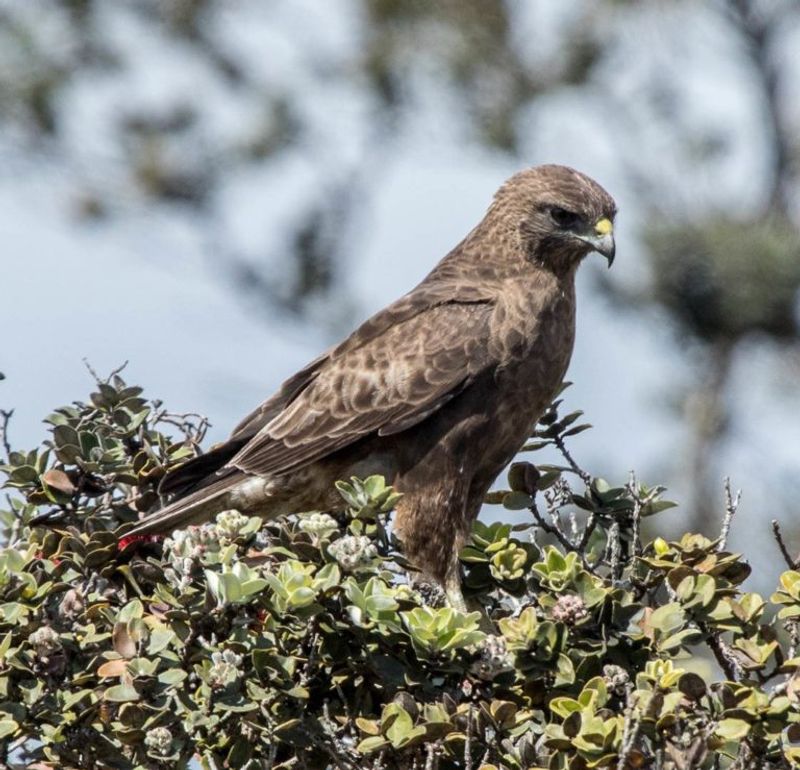
Hawaii’s isolation explains the bald eagle’s absence—these birds never naturally colonized the islands. The state’s ecosystem evolved without large raptors, developing unique native birds instead.
Occasionally, wayward eagles might appear as extremely rare vagrants. Hawaii’s native ‘io (Hawaiian hawk) fills a similar ecological niche, though it’s much smaller than its mainland cousin and faces its own conservation challenges.
12. Rhode Island
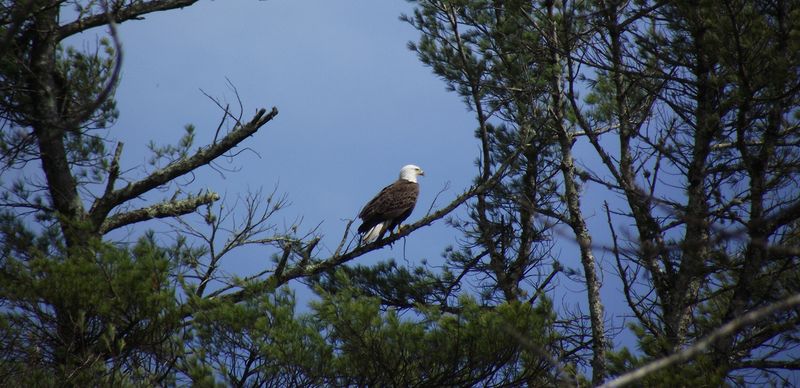
Rhode Island’s limited wilderness areas make eagle sightings uncommon. The state’s compact size means fewer isolated nesting sites that eagles prefer for raising young.
Narragansett Bay occasionally attracts winter visitors, especially during harsh weather elsewhere. Conservation efforts have helped numbers increase slightly in recent years, but Rhode Island remains one of the least likely states for spotting these majestic birds.
13. New Jersey
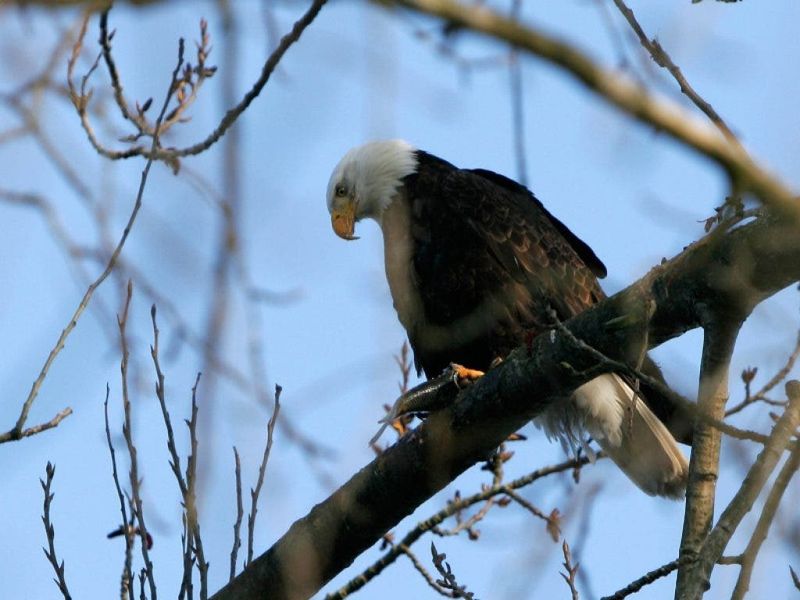
New Jersey’s dense development limits suitable eagle habitat. Though coastal areas occasionally host visitors, the state’s heavily populated nature works against these wilderness-loving birds.
The Delaware Bay region offers the best chance for sightings. Conservation success stories exist—eagles have returned to the Meadowlands after decades of absence—but numbers remain low compared to neighboring states with more extensive wilderness.
14. Delaware
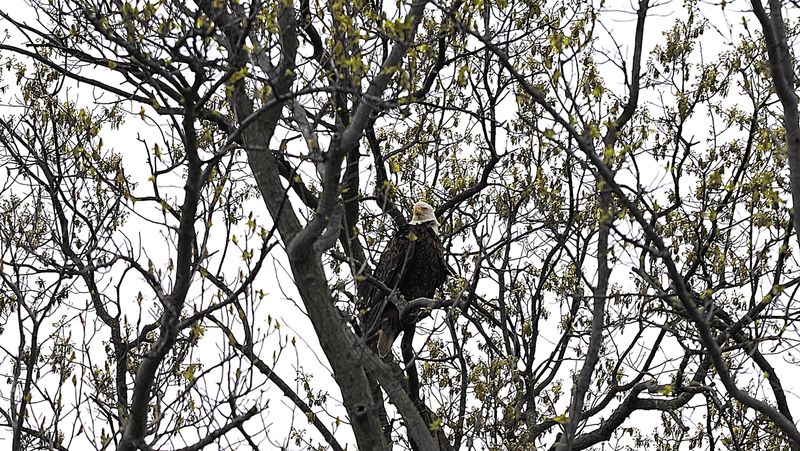
Delaware’s limited geographic size restricts eagle territories. While the Delaware River occasionally attracts visitors, the state lacks the extensive wilderness these birds typically prefer.
Bombay Hook National Wildlife Refuge offers occasional sightings during migration. Delaware’s relatively flat topography means fewer of the tall nesting trees and cliff sites that eagles favor in other regions.
15. Nevada
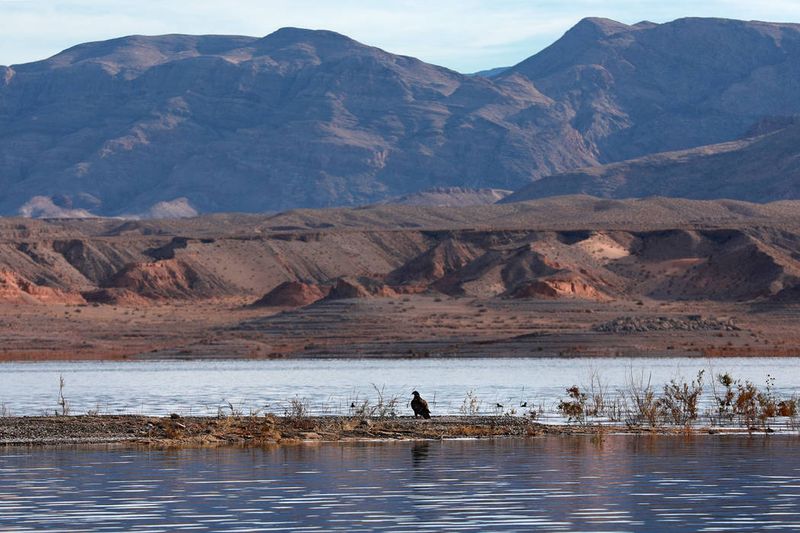
Nevada’s arid landscapes don’t match bald eagles’ preference for fish-rich waterways. The state’s limited surface water means fewer feeding opportunities for these primarily fish-eating raptors.
Lake Mead and Lake Tahoe occasionally attract winter visitors. Nevada’s desert ecosystem simply doesn’t provide the combination of tall trees near productive fishing grounds that eagles require for successful breeding and year-round residence.


